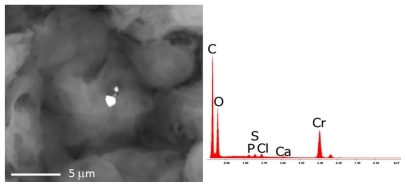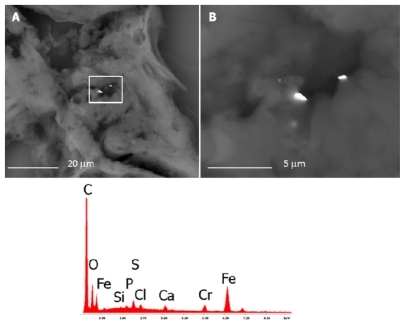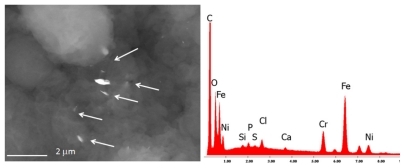Figures & data
Table 1 Type, chemical composition, and size of particles identified in lymph node samplesTable Footnote*
Figure 1 The microphotograph shows two submicronic particles (the white spots) embedded in the left lymph-node biopsy sample. The EDS spectrum shows the chemical composition: carbon, oxygen, chromium, phosphorus, sulfur, and chlorine.


